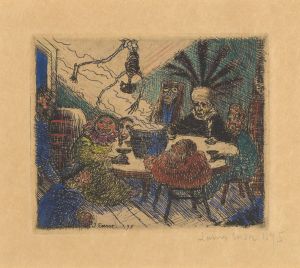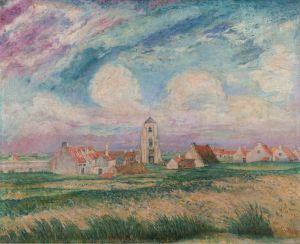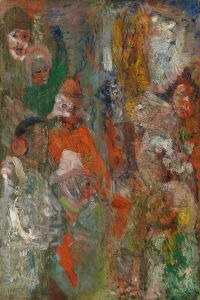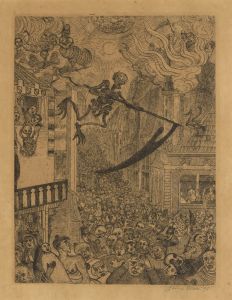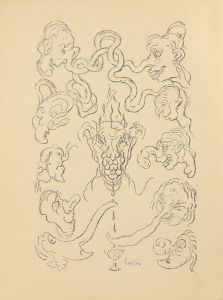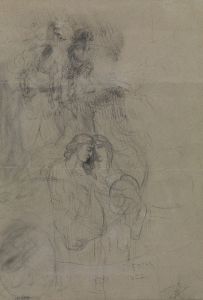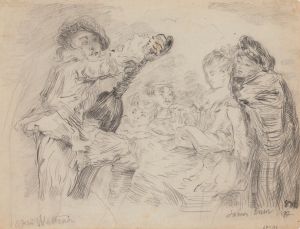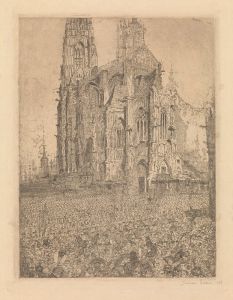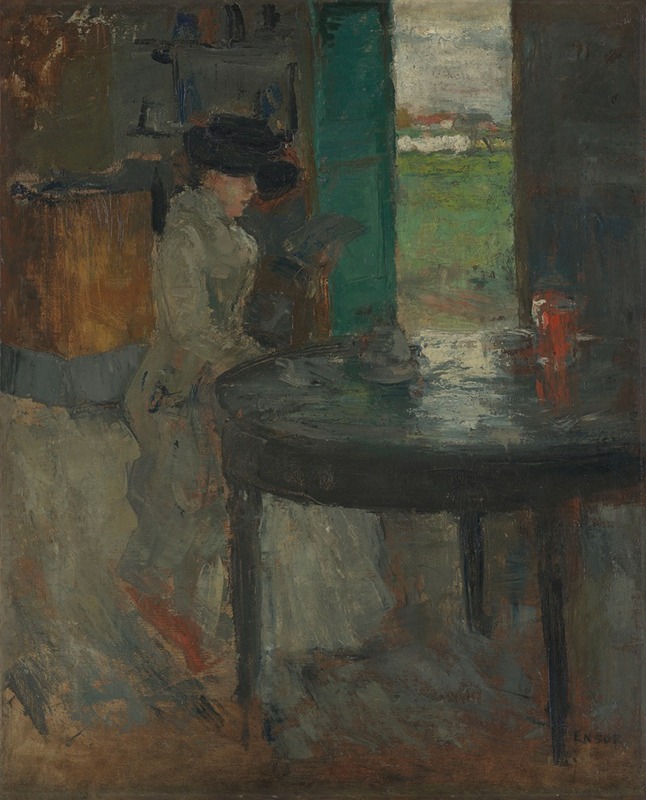
The Wait
A hand-painted replica of James Ensor’s masterpiece The Wait, meticulously crafted by professional artists to capture the true essence of the original. Each piece is created with museum-quality canvas and rare mineral pigments, carefully painted by experienced artists with delicate brushstrokes and rich, layered colors to perfectly recreate the texture of the original artwork. Unlike machine-printed reproductions, this hand-painted version brings the painting to life, infused with the artist’s emotions and skill in every stroke. Whether for personal collection or home decoration, it instantly elevates the artistic atmosphere of any space.
James Ensor's painting "The Wait" is a notable work by the Belgian artist, who is renowned for his unique style and contribution to the Symbolist movement. Ensor, born in 1860 in Ostend, Belgium, was a pivotal figure in the transition from the 19th-century artistic traditions to the modernist movements of the 20th century. His work often features fantastical elements, vivid colors, and a distinctive use of light and shadow, which are characteristic of his broader oeuvre.
"The Wait" exemplifies Ensor's fascination with themes of mortality, the grotesque, and the absurd. While specific details about the painting's creation and its exact date are not extensively documented, it is consistent with Ensor's thematic exploration during the late 19th and early 20th centuries. During this period, Ensor frequently depicted scenes that combined elements of the macabre with satirical commentary on society and human nature.
Ensor's style is marked by a bold use of color and a penchant for depicting figures in a manner that borders on caricature. In "The Wait," these stylistic choices are evident, as the painting likely features figures that are exaggerated in form and expression, a common trait in Ensor's work. This approach allows Ensor to convey complex emotions and critique societal norms through visual means.
The painting's title, "The Wait," suggests themes of anticipation or suspense, which are recurrent in Ensor's art. His works often explore the tension between life and death, the mundane and the supernatural, and the individual versus society. Ensor's ability to infuse his paintings with a sense of narrative and psychological depth is one of the reasons his work continues to resonate with audiences today.
Ensor's influence extends beyond his immediate artistic circle, impacting later movements such as Expressionism and Surrealism. His willingness to confront uncomfortable truths and explore the darker aspects of human existence paved the way for future artists to push the boundaries of traditional art forms. "The Wait," like many of Ensor's works, challenges viewers to reflect on their own perceptions of reality and the underlying forces that shape human experience.
In summary, while specific details about "The Wait" are limited, the painting is a testament to James Ensor's innovative approach to art and his enduring legacy as a pioneer of modernist expression. His ability to blend the fantastical with the real, and to critique societal norms through his unique visual language, ensures that his work remains a subject of study and admiration in the art world.







